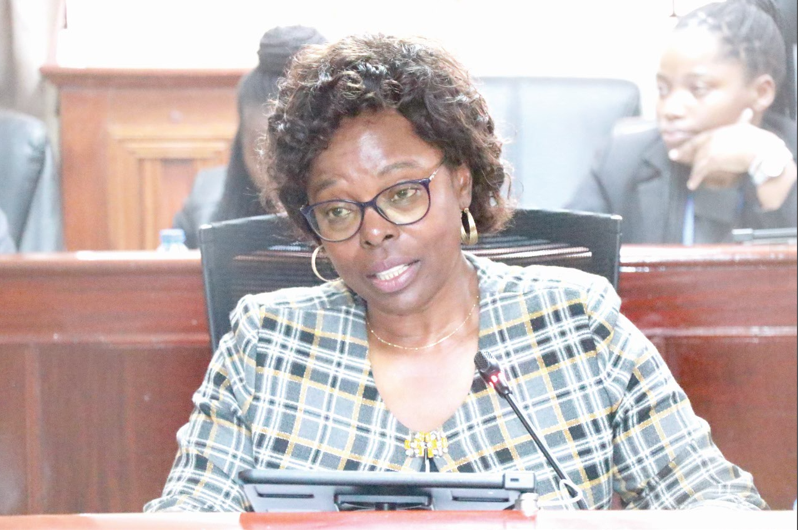On-board men in empowering women

Male inclusion and engagement has become a growing topic of concern globally and also here in Kenya. For a long time, focus has been on women as they have long been considered the marginalised group. Collaborative efforts and engagements have also been effected to ensure that the girl child is empowered in all areas. And even though these efforts have proved fruitful and much progress has been made, a big problem lingers.
Now more than ever, the boy child feels neglected and many have undoubtedly expressed their displeasure in women empowerment, emphasising that it has gone beyond what it is supposed to do.
While women empowerment is aimed at equipping women with knowledge and skills to navigate life in all areas and give them a voice and the right to determine their life choices, some men feel women have resorted to shifting gender roles that are overpowering them.
Rise of male domination
They say women are assuming many of the men’s roles in the name of “what a man can do, women can do better,” a situation that is a ticking time bomb to gender wars.
This situation has led to several online wars between males and females, giving rise to male supremacists such as Amerix, Andrew Kibe, and renowned Andre Tate who all claim to be champions of men’s rights.
Their course is to unleash the beast in men and help them thrive in life without being influenced by women, otherwise, you’d be called a ‘simp’ or a ‘soy boy,’ perceptions that have resulted in toxic masculinity among many young men.
The aftermath? A tug of war between males and females that has created immense animosity between the two genders, further widening the gender inequality gap in Kenya.
The effects
Various studies have shown that gender inequality sets the underlying context for violence against girls and women.
For instance, in recent years, femicide, defined as the intentional killing of women because of their gender, has become a nightmare in Kenya.
The National Institute of Health (NIH) depicts that rates of femicide are mostly driven by various factors, among them the endorsement of inequitable gender norms that condone violence against women.
In Kenya, atleast 170 women and girls were victims of femicide within just 24 months in 2024.
Key trends in femicide cases from the report also reveals that intimate partners including husbands or boyfriends were the leading perpetrators, accounting for 70 per cent of all murder cases in 2024.
Intimate partner violence
Additionally, the Gender Violence Recovery Centre reveals that between 39 per cent and 47 per cent of Kenyan women experience gender based violence (GBV) in their lifetime, one of the highest rates in the world.
Various organisations, in collaboration with the government have now come together seeking interventions to end femicide and GBV in the country.
However, it has emerged that despite all these efforts, the numbers remain high and cases are still being reported.
During the National Gender Sector Working Group (GSWG) meeting that brought together leaders, policymakers and practitioners to deliberate on key gender priorities including policy response to GBV and femicide in the country, it emerged that the role of men in ending femicide, which is a critical aspect is often overlooked.
Bringing men onboard
Eric Mungai, the founder of Yazua Afrika, a grassroot initiative that trains boys on leadership and masculinity emphasises that there is need for male inclusion and engagement in ending femicide and GBV.
“If we do not do something for boys and men, we will have done absolutely nothing for women and girls’ empowerment. We need to engage with men when they are still young,” says Mungai.
According to him, since men are often the perpetrators of heinous acts against women, there is a need to first empower men by beginning to engage them from high school levels through mentorship programmes and prepare them for positive masculinity from as early as 12 years of age.
“When it comes to issues such as femicide and GBV, men are often the perpetrators. They become a threat because there are no systems and structures to support and empower them. And then we wonder why our society is so unsafe,” he further notes.
On matters of gender equality, Mungai notes that the purpose of male engagement is to make sure that the gains of women empowerment are not reversed. Instead, it safeguards and ensures that both genders rise up together without having to fight each other.
“When you really think about it, what men are saying is that we want things to go back to how they used to and that is to subjugate women. However, that’s a great risk that needs to be mitigated, and that the way to mitigate it is through positive male engagement and inclusion,” denotes Mungai.
This way, he says, women empowerment gains will still be protected, but at the same time, ensuring there is a level playing field and there’s equality that both genders are growing and flourishing without feeling like one is beneath the other, or one is undeserving over the other.
“A world of floundering boys will not be a world of flourishing women,” notes Mungai.
Faith Nashipae, the Male Engagement and Inclusion Committee in Kenya’s National Gender Sector also says that they are on course to ensure male involvement across sectors as it is becoming crucial.
Working on policies
She says that the committee is currently working on a policy level to ensure that it brings the voices of men and boys from the community level to the national level.
She also emphasises that when it comes to policy, the committee is working on strategies that are supposed to guide issues of male engagement.
“We appreciate that male engagement is relatively new across the globe and so we are working to ensure that gender equality and positive masculinity is well-represented,” says Nashipae.
She further notes that the committee has proposed for a masculinity research with UNESCO that will take place in a sample of five counties in the country, adding that male engagement is a highly preventative measure for GBV.
The committee has as of now launched male and engagement sub-committees in 18 counties and is looking to cover a larger part by mid-year.
“Right now, we are working on a policy level to ensure that we are bringing the voices of men and boys from the community to the national level under policy and we are working on strategies that are supposed to guide issues of male engagement,” states Nashipae.
In September 2024, the committee’s concept note for male engagement and inclusion Kenya was approved and has since started community engagement on developing the national strategy for inclusion.
Nashipae also notes that the state department for gender has failed to engage male voices during review of policies and that’s where the problem lies.
“When they are doing the review of county policies, they don’t include the agenda of male engagement and inclusion and that is where the boy child falls,” she stresses.












